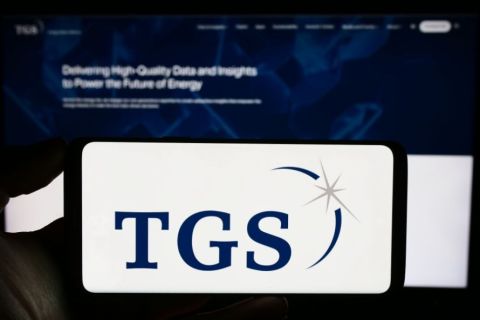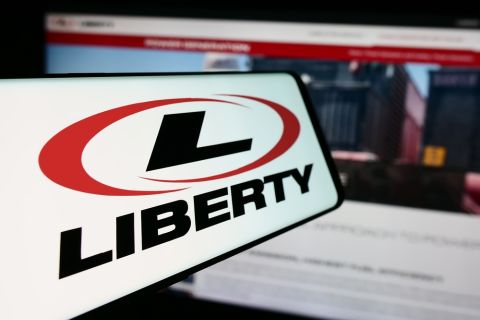
Subsea 7 aims to lower costs for subsea tiebacks with cold flow technology. (Source: Subsea 7)
An increasing number of offshore oil and gas developments can be made viable with long-distance tiebacks by eliminating the need to add expensive topside facilities. The main challenge in longer tiebacks is flow assurance. The temperature reduction as the fluid is transported longer distances may lead to wax deposits on the pipe wall and hydrate formations during operating or reset conditions. Waxing occurs when oil cools and solidifies in the pipeline while hydrates form at high pressures and low temperatures.
The traditional method to combat this is active heating, whether that is direct electrical heating, electrically heat traced flowline or hot water circulation in a pipeline bundle. However, Subsea 7 is pioneering an innovative cold flow system that can reduce costs.
“As tieback distances increase beyond the effective capability of active heating systems, the flow assurance strategy moves from maintaining the temperature above hydrate formation temperature to transporting under ambient seawater temperature conditions,” said Sigbjørn Daasvatn, technology program manager for Subsea 7. “We are currently assessing the boundaries of applicability for cold flow systems for various tieback distances and host platform alternatives, but the concept enables longer tiebacks at a significantly lower cost than with FPSO or platform-based processing solutions.
“Cold flow systems have game-changing potential in remote regions where there is a lack of existing infrastructure or where manned processing facilities are not possible,” Daasvatn added.
Current Configuration
In a typical tieback system, oil or gas is transported from wells or the subsea production system to a manifold with a temperature dependent tieback line to the platform, where the fluid is processed for long-distance exports to some refineries.
“That is our standard setup, and we have tried to stretch and stretch these distances,” Daasvatn explained. “At the moment we operate at 25 km to 50 km [16 miles to 31 miles].”
However, distances between 100 km and 300 km (62 miles and 186 miles), which are needed in the Arctic area, require thinking differently, he said.
“For our regular tiebacks, we have traditionally been using a set of pipeline systems that have been developed throughout the years,” Daasvatn said. “Over time we have tried to improve the insulation for the pipeline systems and then we started to try to heat the pipelines, to add heating to avoid hydrates during startups. As the tieback length increases, heating the flowline becomes problematic because it requires a lot of energy.”
An alternative would be to move processing functions to the seabed, leaving only a small percentage of water in the flow, which could be handled with chemicals, allowing a lower temperature pipeline. This would just leave the problem of pigging. However, as the length of the pipeline extends and the requirement for heating grows, this strategy becomes less attractive.
“At that stage it could be better to control the wax out in the field before the liquid is sent along the export line,” Daasvatn added. “What we have done is move the processing subsea to the wellhead. We have stretched out the pipe, and because we handle the wax locally we are not pigging often. We can have an uninsulated cheap pipeline. We call it a preconditioning of the fluid with wax control, and we can send up a cold flow after the wax control unit.”
Instead of maintaining the heat performance along the flowline, an alternative for very long tieback distances is to cool down the fluid and force wax deposition at the pipe wall in a controlled section of the flowline. This wax is removed by a continuous local pigging operation inside the cooler. When the temperature is reduced to ambient seawater temperature and wax has been removed, no further wax deposition will occur, and the fluid can be transported through simple uninsulated flowlines for export. A wax control unit (WCU) based on existing bundle and pipe-in-pipe technology is designed to perform this function.
Wax Control Unit
In terms of operation, the WCU is a large heat exchanger. “It’s a towed pipeline bundle system, where we have pipe-in-pipes inside,” Daasvatn said. “The production flow will run through this bundle system as it is continuously cooled down by seawater.”
The system has three new components: the automated pig launcher; a plateau valve, which is a non-return valve; and the diverter.
“The pig is launched into the system then runs continuously around the cooling loop system all the time. The pig just goes through the system until it enters the outlet area. Here, we have the inlet and outlet at two very tight locations,” Daasvatn said. “The special part that we include here is to design a pig drain that is pushed by the flow, and before it loses the push from behind it will get new flow pushing it in from the inlet. By having the inlet and outlet very close to each other, we can make this pig pass through continuously.”
According to Daasvatn the cold flow system is replacing the FPSO alternatives at a much lower price, saving several hundred million dollars while reducing labor and improving the environmental impact.
Recommended Reading
BP to Use Palantir Software to Improve AI in Operations
2024-09-09 - BP and Palantir have agreed to a five-year strategic relationship in which Palantir’s AIP software will use large language models to improve BP operations.
Fugro’s Remote Capabilities Usher In New Age of Efficiency, Safety
2024-11-19 - Fugro’s remote operations center allows operators to accomplish the same tasks they’ve done on vessels while being on land.
ChampionX Releases New Plunger Lift Well Solution
2024-09-13 - The SMARTEN Unify control system is the first plunger lift controller in ChampionX’s SMARTEN portfolio.
TGS Awarded 2D Survey in the Sumatra Basin
2024-09-09 - TGS’ Sumatra Basin seismic acquisition is expected to be completed by the end of 2024.
Liberty Capitalizes on Frac Tech Expertise to Navigate Soft Market
2024-10-18 - Liberty Energy capitalized on its “competitive edge” when navigating a challenging demand environment in third-quarter 2024, CEO Chris Wright said in the company’s quarterly earnings call.
Comments
Add new comment
This conversation is moderated according to Hart Energy community rules. Please read the rules before joining the discussion. If you’re experiencing any technical problems, please contact our customer care team.






